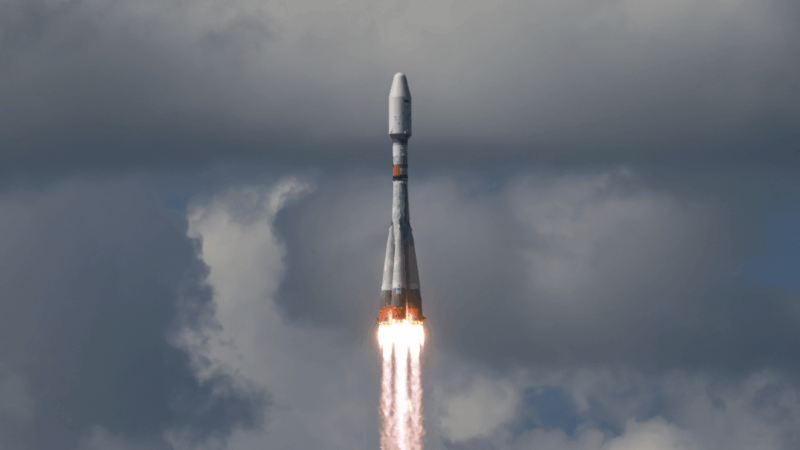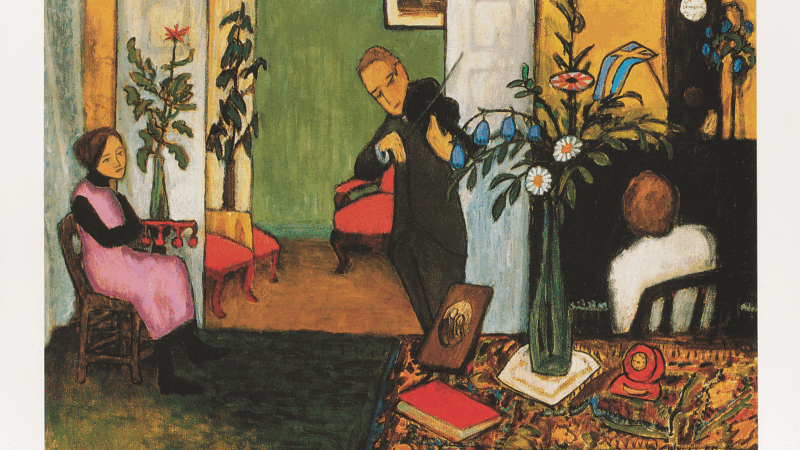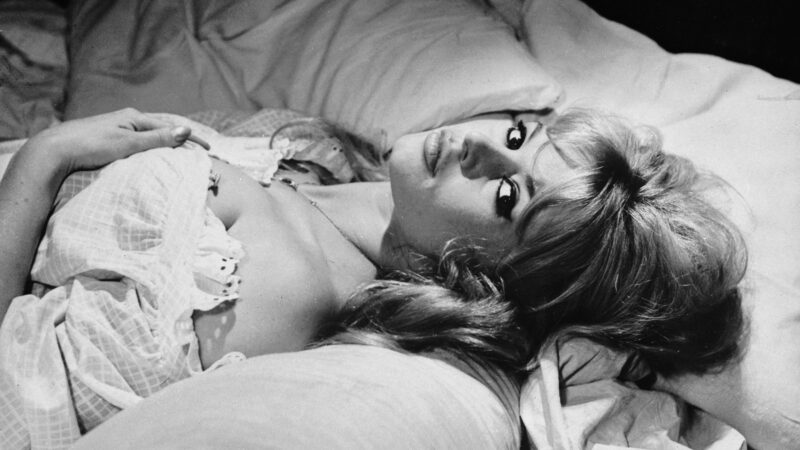A 6-year-old girl from Gaza, a missing limb and a doctor’s mission
A 6-year-old girl with eyes the color of dark chocolate walks into an exam room in a clinic in downtown Beirut.
It’s evident that Kenzi Madhoun has a flare for fashion. She’s wearing a white dress with tassles. Her face is framed beneath a pink straw hat that covers a scar above her hairline. On her left hand, there’s an inked outline of a little heart.
Her right arm, however, is missing.
She’s been through surgeries in Egypt and Turkey. But her father, Adam Madhoun, has brought her to Lebanon hoping for something better.
“What I wish for is for her to live normally, to do whatever she wants to do,” he says through an interpreter. “There are games that need two hands. Or when she wants to wear her clothes. The simplest things.”
The Madhouns are here today to visit with Dr. Ghassan Abu-Sittah, a reconstructive and plastic surgeon at the American University of Beirut Medical Center. He’s also a professor of conflict medicine, a field that considers the biological, psychological and social impacts of injury and trauma due to war.

Abu-Sittah greets Kenzi warmly, asking about her recent flight and where she’s from in Gaza. He leans forward, absorbing visual and verbal information from the little girl. He’s assessing her nourishment, her size, her overall demeanor — but he’s also intently curious about her missing limb.
“The biggest question is how can I improve the quality of that remnant of her upper arm,” says Abu-Sittah, “because that is the determinant of the quality of the prosthetic that she’ll get.”
Kenzi walks with confidence as Abu-Sittah escorts her and her father into the exam room.
During Abu-Sittah’s assessment of Kenzi, he’s not just looking at her as the 6-year-old she is today. He’s simultaneously envisioning her at age 18. That’s because he says he’s “trying to reconstruct a moving object, which is the growing body that always outgrows the scarred part, the injured part.”
And that often means multiple surgeries spread across multiple years. It’s work that Abu-Sittah has mastered over three decades — repairing the wounds of, by his estimate, thousands of children like Kenzi. Children caught in the crossfire of war.
A commitment to heal, forged in battle
Abu-Sittah grew up in Kuwait, the son of Palestinian parents. He observed his father’s work as a physician. But it was when he was a teenager, during the summer of 1982, as he watched the news of Israel’s invasion of Lebanon to confront the Palestine Liberation Organization, that something powerful crystallized inside him.

“Seeing medical teams treating the wounded during the siege of Beirut was a strong influence on not just wanting to become a doctor, but the kind of doctor that I wanted to become,” he says. That is, a reconstructive and plastic surgeon who treats those wounded in war. It’s a specialty all its own.
“War injuries are probably the most complex of reconstructive challenges and the most complex of trauma injuries,” says Abu-Sittah. “An explosive will blow rubble, shrapnel into the body. The wave of the blast devitalizes tissues, and so all of the dead and contaminated tissue needs to be removed before you can consider reconstructing the limb” or treating a wound.
During his training in the United Kingdom, he worked in trauma centers and hospitals where he learned how to do facial reconstructions and pediatric plastic surgery. He practiced medicine in the U.K. and Lebanon, all while spending time across the broader Middle East as a war surgeon, including Iraq, Syria and Yemen.
But it’s in Gaza where Abu-Sittah has felt a particular calling to visit and treat the wounded when violence has flared there over and over again. The current war between Israel and Hamas is no exception, which began when Hamas-led militants led a surprise attack on communities in southern Israel, killing 1,200 people and kidnapping 251 more, according to Israeli authorities. Powerful Israeli retaliatory attacks on Gaza followed.

Two days after October 7, 2023, Abu-Sittah entered Gaza. “I was working as a war surgeon, mainly reconstruction,” he says, which included orthopedic, plastic, maxillofacial and neurosurgical surgery. “But at some point you have to do everything that you can. You open bellies, you do head and neck, you do everything.”
In those early days of the war, from one of the hospitals in the north of Gaza, he told NPR by phone that he and his colleagues were hearing shelling every few minutes. He spoke in between patients.
“A lot of the wounded are women and children, children particularly,” he said. “Sometimes the whole family is injured, sometimes the child is the only survivor. We’re about to do another patient with a blast injury that’s left some of the arteries in the thigh exposed.” Abu-Sittah was worried about the patient hemorrhaging.
“So I’m gonna need to go have a look at and see what we’re gonna face,” he said, before hanging up.
Even as the situation in Gaza rapidly deteriorated, Abu-Sittah continued to work as a war surgeon across multiple hospitals, primarily Al-Shifa and Al-Ahli. He’d treated patients during wartime before, but this was unlike anything he’d ever seen.
“It’s the difference between a flood and a tsunami — the scale, the intensity, the sheer ferociousness,” he says.
In late November 2023, the hospital where Abu-Sittah was working ran out of anesthesia. He realized there was only so much he could do to heal people from inside the enclave. So after 43 days, he left Gaza. He felt he could help better elsewhere.

The journey to Lebanon
Meanwhile, in Lebanon, many were watching the suffering in Gaza, wanting to help but not knowing how. Darine Dandachly, a social activist and former banker, was one of them.
“The fact that you cannot do anything to change what you feel, it’s heavy,” she says. “It’s eating us, this helpless feeling, and it’s like cancer.”
She connected with a small group of people in Lebanon who felt like she did. And together, they decided to start something that would focus on the children of Gaza.
They knew of Abu-Sittah, who had already been considering returning to Lebanon to work with a team of physicians uniquely suited to treat those who’ve suffered injuries during a conflict. “Lebanon is a bit of a regional health referral destination,” he explains.
Many of his colleagues had done their medical training during the Lebanese civil war, which lasted from 1975 until 1990. In addition, “they’ve treated Iraqi patients from the wars and from the car bombs and from the civil war in Syria,” he says. “The experience and the expertise in the management of war wounds that exists in Lebanon doesn’t exist anywhere else.”
In particular, Abu-Sittah felt that this small Arab country on the Mediterranean was the place to bring wounded children from Gaza for complex reconstructive surgery.
It was a mission that aligned with the goals that Dandachly and her team were envisioning. So in partnership with him, they formed the Ghassan Abu-Sittah Children’s Fund. And they began raising money from UNICEF, NGOs and individuals as well as concerts and businesses that designated a share of their profits to the fund.
The project takes a holistic approach. “We do mental health, of course medical treatment,” says Dandachly. “Education whenever possible, activities for the kids on top of the living expenses, accommodation.”
Of flight and flying
Kenzi Madhoun — the 6-year-old with the pink hat — is one of the beneficiaries of the fund’s work.
Two weeks after October 7, Kenzi was in Deir al-Balah, in central Gaza, sitting in the garden with her grandfather. “We heard things and then we thought it was fireworks,” she says through an interpreter, “but it wasn’t.”

Rather, it was an Israeli air strike. The force of the explosion propelled her into the air. “The missile took me up,” she says. Kenzi felt like she was flying, like — in her words — Superman or Batman. When she landed, she lost consciousness.
Her father wasn’t with her but a journalist friend called to tell him of the attack and that Kenzi had been pulled from the rubble. “They told me that Kenzi died,” Madhoun says. He rushed to his daughter, arriving an hour later to discover, remarkably, that she was still alive — risen from the devastation like a phoenix, he says.
But Kenzi was wounded. She had a fractured pelvis and skull, and a missing arm.
From that point forward, she and her father were inseparable. “We stayed together,” says Madhoun. “We’ve been like twins.”

The two managed to leave Gaza with the help of the Red Cross and the Red Crescent. Over the next year and a half, they alternated between Egypt and Turkey for treatment. But it became clear that she needed to see doctors practiced in healing the particular wounds of war.
A charity group came across her medical file and referred it to the children’s fund, which brought Kenzi and her dad to Lebanon in the first half of August to begin their consultation. On her first day in the country, Abu-Sittah ordered a shoulder X-ray for her at his clinic at the American University of Beirut Medical Center. He and another surgeon were encouraged with what they saw.
They decided that “distraction” was a possibility — a surgical procedure that will elongate what’s left of her upper arm bone. First, they will fracture it into two parts. “And then you move them away from each other by one millimeter every day,” says Abu-Sittah. “And that induces new bone formation because the body’s thinking, ‘This is a fracture, I need to heal.'”

Abu-Sittah’s colleague — a world expert in bone distraction — believes he can give Kenzi a critical three extra inches in that stump. “It means that what she will end up with is a prosthesis that doesn’t have to be secured to her body through a shoulder strap,” says Abu-Sittah. Rather, it will be “able to stick to her limb, which makes it more appealing physically and functionally.”
The process will be painful and the lengthening will require nearly three months. Kenzi’s father will be responsible for bathing the area to prevent infection and separating the bones millimeter by millimeter, day after day. He’ll be supported by a case worker and the medical team throughout.
Once distraction is complete, “you leave it for three, four weeks for the new bone to harden and calcify,” says Abu-Sittah. At that point, she’ll be ready for the fitting of her first prosthesis.
“We want to go all out,” says Abu-Sittah. He and his colleagues want to try something called a myoelectric prosthesis, one that would allow the muscle that remains to stimulate movement in the artificial arm.
Abu-Sittah is well aware of the many children who would benefit from the kind of care that he and his colleagues are providing here in Beirut. Nearly two years into the war in Gaza, UNICEF estimates that more than 50,000 Palestinian children have been killed or injured. But for now, this is Abu-Sittah’s base of operations; he says he filed for entry into Gaza two months ago but was denied by the Israeli authorities.
Since he arrived in Beirut more than a year ago, he’s treated over 30 children from Gaza and another 70 or so kids who were injured in Lebanon during the war with Israel last fall.

“We are treating one child at a time until the war ends and we can be part of a bigger discussion,” he says. “This is less than a drop in the ocean, but at least we’re making a difference in the lives of these kids.”
Kids like Kenzi Madhoun — a little phoenix who’s just begun to regrow her lost wing.
Transcript:
AILSA CHANG, HOST:
Nearly two years into the war in Gaza, UNICEF estimates that more than 50,000 Palestinian children have been killed or injured. Reporter Ari Daniel brings us the story from nearby Lebanon, where a doctor and his team are racing to heal the handful of kids they can reach.
ARI DANIEL, BYLINE: It’s clear in an instant Dr. Ghassan Abu-Sittah is just really good with kids.
GHASSAN ABU-SITTAH: (Speaking Arabic).
KENZI MADHOUN: (Speaking Arabic).
DANIEL: Here at his weekly clinic at the American University of Beirut Medical Center, he’s meeting 6-year-old Kenzi Madhoun for the first time.
KENZI: (Speaking Arabic).
DANIEL: Kenzi has eyes the color of dark chocolate. Her face is framed beneath a pink straw hat that covers a scar above her hairline. On her left hand, I see the drawing of a little heart. Her right arm, though, is missing. Kenzi’s dad, Adam Madhoun, brought her here to Lebanon, hoping Abu-Sittah and his colleagues can help his daughter have a normal life.
ADAM MADHOUN: (Through interpreter) What I wish for is for her to do whatever she wants to do. Like, there are games that need two hands, or when she wants to wear her clothes – the simplest things.
DANIEL: But these simple things will require many complexities. To start with, Dr. Abu-Sittah says he’s focusing on Kenzi’s missing limb.
ABU-SITTAH: The biggest question is – how can I improve the quality of that remnant of her upper arm? – because that is the determinant of the quality of the prosthetic that she’ll get.
UNIDENTIFIED PERSON: (Speaking Arabic).
KENZI: (Speaking Arabic).
ABU-SITTAH: (Speaking Arabic).
UNIDENTIFIED PERSON: (Speaking Arabic).
DANIEL: The doctor escorts the father and daughter into an exam room. Kenzi walks confidently with the group of adults. Abu-Sittah says that during his assessment, he’ll not just be looking at Kenzi as the 6-year-old she is today, but also as the 18-year-old she’ll become.
ABU-SITTAH: You are trying to reconstruct a moving object, which is the growing body that always outgrows the injured part.
DANIEL: And that means multiple surgeries over multiple years. It’s work that Abu-Sittah has mastered over three decades repairing the wounds of thousands of children like Kenzi, caught in the crossfire of war. He chose this path as a teenager, he says, growing up in Kuwait in a Palestinian family. During the summer of 1982, he remembers watching Israel’s invasion of Lebanon on the news.
ABU-SITTAH: Seeing medical teams treating the wounded was a strong influence on not just wanting to become a doctor, but the kind of doctor that I wanted to become.
DANIEL: That is a reconstructive and plastic surgeon who treats those wounded in war.
ABU-SITTAH: War injuries are probably the most complex of reconstructive challenges. An explosive will blow rubble, shrapnel into the body. The wave of the blast devitalizes tissues and kills them. And so that needs to all be removed before you can consider reconstructing the limb.
DANIEL: Over the years, Abu-Sittah has treated the wounded in numerous conflicts, but it’s in Gaza where Abu-Sittah has felt a particular calling to help when violence has flared there over and over again. October 7 was no exception, after Hamas-led militants led a surprise attack on communities in southern Israel, killing 1,200 and kidnapping 251 more, according to Israeli authorities. Powerful Israeli retaliatory attacks on Gaza followed.
ABU-SITTAH: On the 9 of October, I went into Gaza.
DANIEL: It was shortly thereafter when I first reached Abu-Sittah by phone at one of the hospitals in the north. He told me he was hearing shelling every few minutes.
(SOUNDBITE OF ARCHIVED NPR CONTENT)
ABU-SITTAH: A lot of the wounded are women and children. Sometimes the child is the only survivor. We’re about to do another patient with much bigger wound in his thigh – a kind of blast injury, so I’m going to need to go. Take care. Bye-bye.
DANIEL: Abu-Sittah says the conditions in Gaza this time were unlike anything he’d ever seen.
ABU-SITTAH: It’s the difference between a flood and a tsunami – the scale, the intensity, the sheer ferociousness.
DANIEL: There was only so much Abu-Sittah could do from the inside, so after 43 days, he left Gaza and eventually made his way to Lebanon.
ABU-SITTAH: The expertise in the management of war wounds in Lebanon doesn’t exist anywhere else. And so I felt that this is really the place to bring wounded kids for complex reconstructive surgery.
DANIEL: Meanwhile, in Lebanon, many were watching the suffering in Gaza wanting to help, like Darine Dandachly, a social activist and former banker.
DARINE DANDACHLY: The fact that you cannot do anything to change what you feel, it’s heavy. It’s eating us – you know? – the helpless feeling. And it’s like cancer.
DANIEL: She and a few others knew of Dr. Ghassan Abu-Sittah, so in partnership with him, they formed a fund in his name, with the idea of helping war-injured children who’ve made it out of Gaza – children like Kenzi Madhoun, the 6-year-old with the pink hat.
Do you like to dress fashionably?
KENZI: Yes.
DANIEL: Yes. Yes.
Two weeks after October 7, Kenzi tells me she was sitting in the garden with her grandfather in Deir al Balah, in central Gaza.
KENZI: (Through interpreter) We heard things, and then we thought it was fireworks. But it wasn’t.
DANIEL: It was an airstrike. The force of the explosion propelled her into the air.
KENZI: (Through interpreter) The missile took me up.
DANIEL: Kenzi felt like she was flying, like a superhero.
KENZI: Superman or Batman.
DANIEL: When she landed, she lost consciousness. Her father, Adam Madhoun, wasn’t with her, but a journalist friend called to tell him of the attack – that Kenzi had been pulled from the rubble.
MADHOUN: (Through interpreter) They told me that Kenzi died.
DANIEL: Madhoun rushed to his daughter and arrived an hour later to discover Kenzi was still alive.
MADHOUN: (Speaking Arabic).
DANIEL: “Like a phoenix,” he says.
MADHOUN: (Speaking Arabic).
DANIEL: But she was severely wounded – a fractured pelvis and skull, and a missing arm. Since then…
MADHOUN: (Through interpreter) We stayed together. We’ve been like twins. I didn’t not see her for any day.
DANIEL: Kenzi and her dad managed to leave Gaza, and over the next year and a half they alternated between Egypt and Turkey for treatment. But it became clear that she needed to see doctors practiced in healing the particular wounds of war, and so Kenzi and her dad arrived in Lebanon to meet with Abu-Sittah and his team. Their first meeting was here at his weekly clinic.
ABU-SITTAH: And truth is a distraction is a possibility (ph).
DANIEL: Here?
ABU-SITTAH: Ah.
DANIEL: Abu-Sittah asks his colleagues to order an X-ray of Kenzi’s right shoulder because he wants to see if distraction is possible – a procedure that would elongate what’s left of her upper-arm bone by first fracturing it into two parts.
ABU-SITTAH: And then you move them away from each other by one millimeter every day, and that induces new bone formation.
DANIEL: Ultimately, Abu-Sittah’s colleague, a world expert in bone distraction here, determines he can give Kenzi a critical three extra inches in her stump.
ABU-SITTAH: It means that what she will end up with is a prosthesis that doesn’t have to be secured to her body through a shoulder strap that goes to the other side but is able to stick to her limb, which makes it better, more appealing physically and functionally.
DANIEL: The process will be painful – the first step in a long medical journey ahead. Kenzi’s father is ready.
KENZI: (Speaking Arabic).
DANIEL: Kenzi is scared.
KENZI: (Through interpreter) I’m really afraid. I don’t like needles.
DANIEL: I understand you feel a little nervous now. Is that kind of how you’re feeling?
KENZI: Of course.
UNIDENTIFIED PERSON: Of course.
DANIEL: Of course.
That was last Friday. Today was Kenzi’s surgery. Abu-Sittah sent me this message.
ABU-SITTAH: It just – it went very well. We just finished now. It went very well.
DANIEL: The phoenix has started to regrow her wing. For NPR News, I’m Ari Daniel, Beirut.
(SOUNDBITE OF MUSIC)
‘Bomb cyclone’ forecasted to bring heavy snow, blizzard conditions and dangerous travel
A 'bomb cyclone' is intensifying severe winter weather for millions of people across the U.S. The system is expected to knock out power and disrupt holiday travel.
Russia sends 3 Iranian satellites into orbit, report says
The report said that a Russian rocket sent the satellites on Sunday from a launchpad in eastern Russia.
Viral global TikToks: A twist on soccer, Tanzania’s Charlie Chaplin, hope in Gaza
TikToks are everywhere (well, except countries like Australia and India, where they've been banned.) We talk to the creators of some of the year's most popular reels from the Global South.
This painting is missing. Do you have it?
An important work from a rediscovered artist has been absent from public view since the 1970s. A New York curator is hunting for it.
Memory loss: As AI gobbles up chips, prices for devices may rise
Demand for memory chips currently exceeds supply and there's very little chance of that changing any time soon. More chips for AI means less available for other products such as computers and phones and that could drive up those prices too.
Brigitte Bardot, sex goddess of cinema, has died
Legendary screen siren and animal rights activist Brigitte Bardot has died at age 91. The alluring former model starred in numerous movies, often playing the highly sexualized love interest.








